
SAP Commerce-based feeds creation and management system
We developed a system for creating product feeds to promote the customer’s products on marketplaces, boosting the customer’s sales by 25%.
Context
Our customer is a European trading company with an SAP Commerce-based multi-category online store selling 200,000+ products across 10,000+ categories, from workwear to household items, and serving thousands of B2B and B2C clients in 50+ regions.
The company promotes its products on marketplaces with the help of a custom feed generation system. The system had a number of issues, such as the inability to configure fields (e.g., delivery terms, availability characteristics), include and exclude products, categories and brands, customize promotions and promo text, add passwords, and more. Besides, the system could generate feed files only for 15 regions, and the feed generation took up to 15-20 minutes. Thus, the company wanted to enhance the system’s functionality to generate and import unique product content on marketplaces faster and easier.
They chose Itransition based on our extensive expertise in SAP Commerce and our previous successful collaborations on their online store optimization, mobile version creation, and other projects.
Solution
Our team developed an SAP-based engine that generates unique feeds for products and groups of products, regions of sales, and marketplaces so that clients could see accurate item information on different advertising platforms.
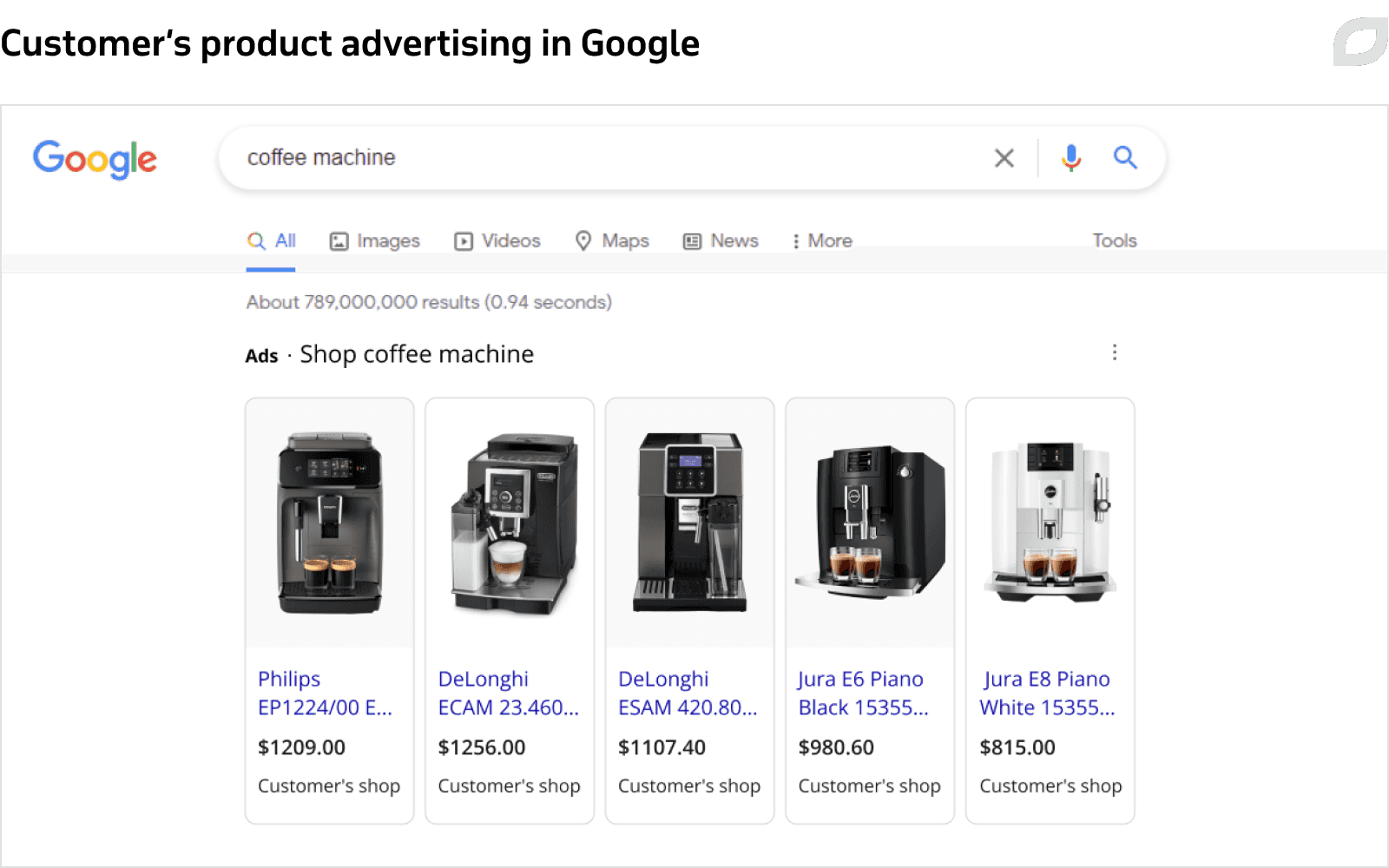
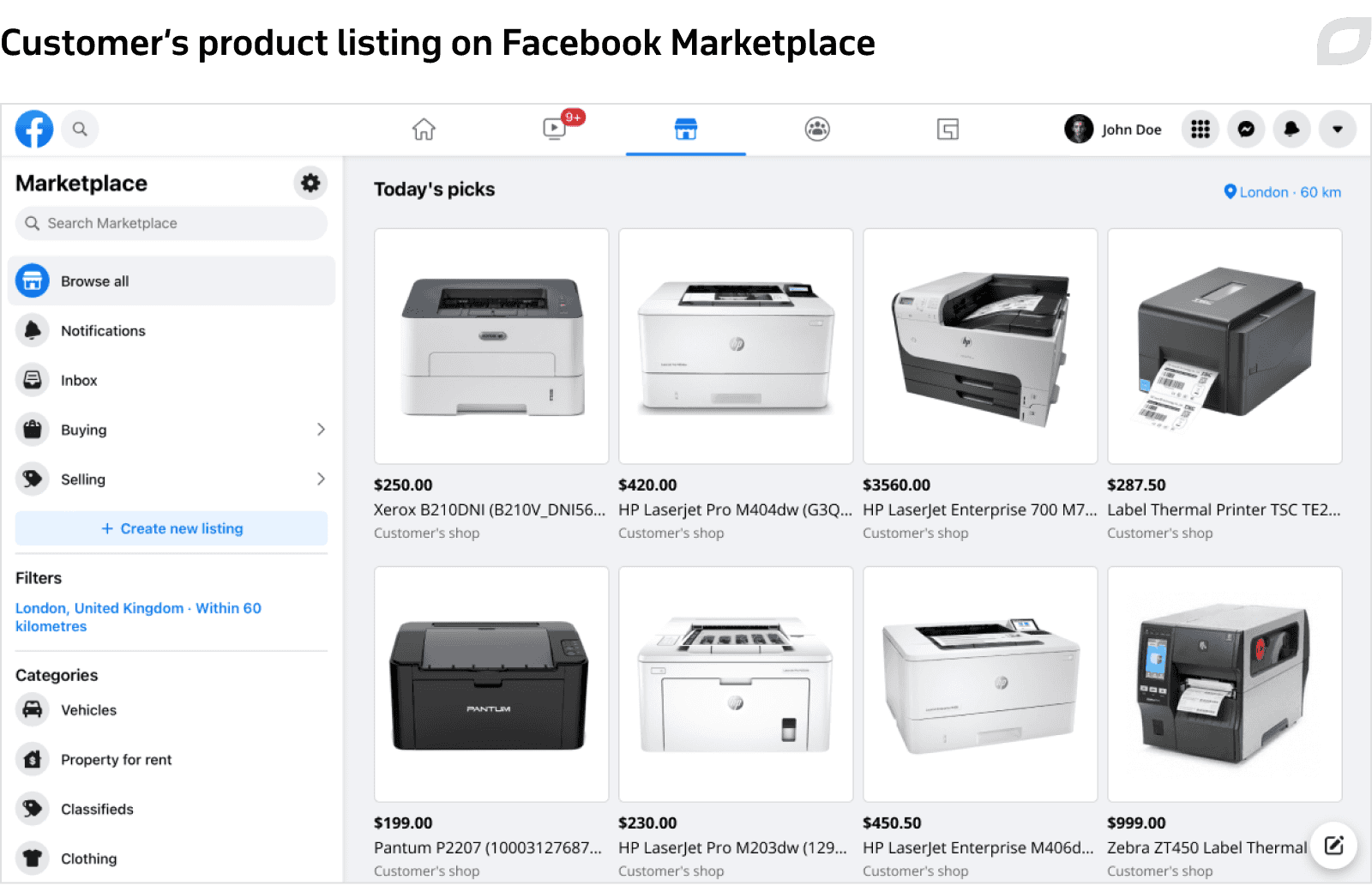
Preliminary price calculation
Analyzing the customer's system, we noticed that marketplaces banned users for incorrect feed files (for example, out-of-date information, including product prices). To prevent irrelevant prices bans, provide up-to-date product feed data, and increase feed generation speed, we integrated a preliminary price calculation module into the customer’s ecommerce system. Тhe module plans the price changes based on price configurations (purchase price, base price, planned discounts, etc.) for a certain period, region of sale, etc. Then, the system sends prices aggregated for a certain period, region, company, or category to the feed generation system.
Feed generation
Our SAP specialists improved the customer’s feed generation system, adding the ability to define the fields included in or excluded from the feed, set up a UTM code, and configure promo text. The system now also allows for flexible generation of product feed files to be uploaded to marketplaces. The system creates a feed file based on:
- product properties (category, brand name, SKU number, description, price, images, discounts, delivery terms)
- sales region
- selected marketplaces (Google Merchant Center, Facebook, Instagram, Criteo, RTB House)
Then, the system saves the feed data as an XML file in the database and generates links to feed files. This way, the feed data in marketplaces refreshes automatically when the marketplace is set up. Feeds are generated at different times to distribute the system load. Since some feeds include business-sensitive information, we’ve added the ability to set up, change and delete the password to access the feed.
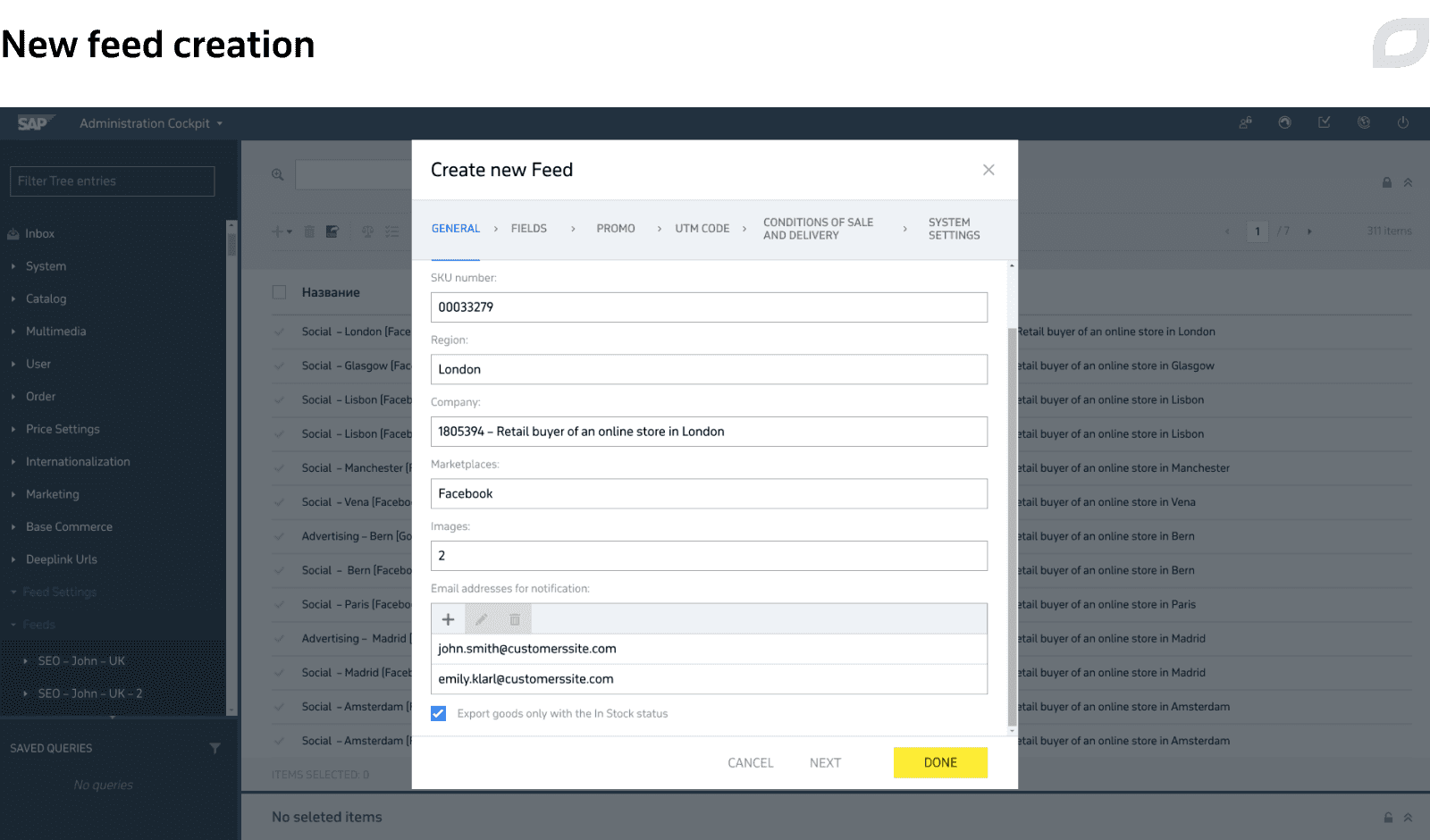
We also added the ability to classify feeds in the admin panel. While uploading the product list in XML format, admins can massively include or exclude products, organizing them by trademarks, brands, product groups, markets, or negative keywords.
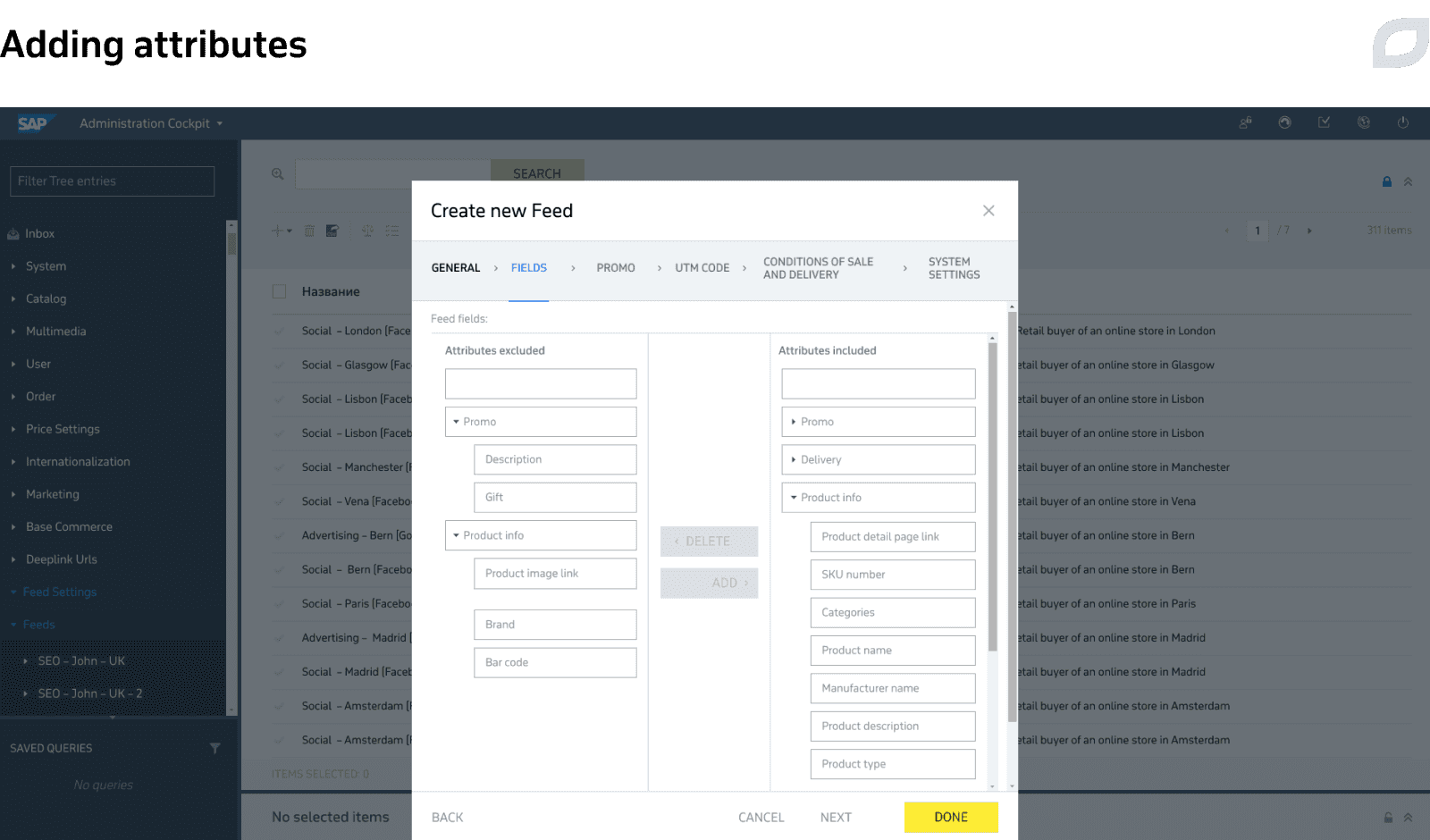
The customer can also step up their promotional product sales by generating the feed at the product level, adding a promotions type, gifts with purchases, delivery terms and cost, etc.
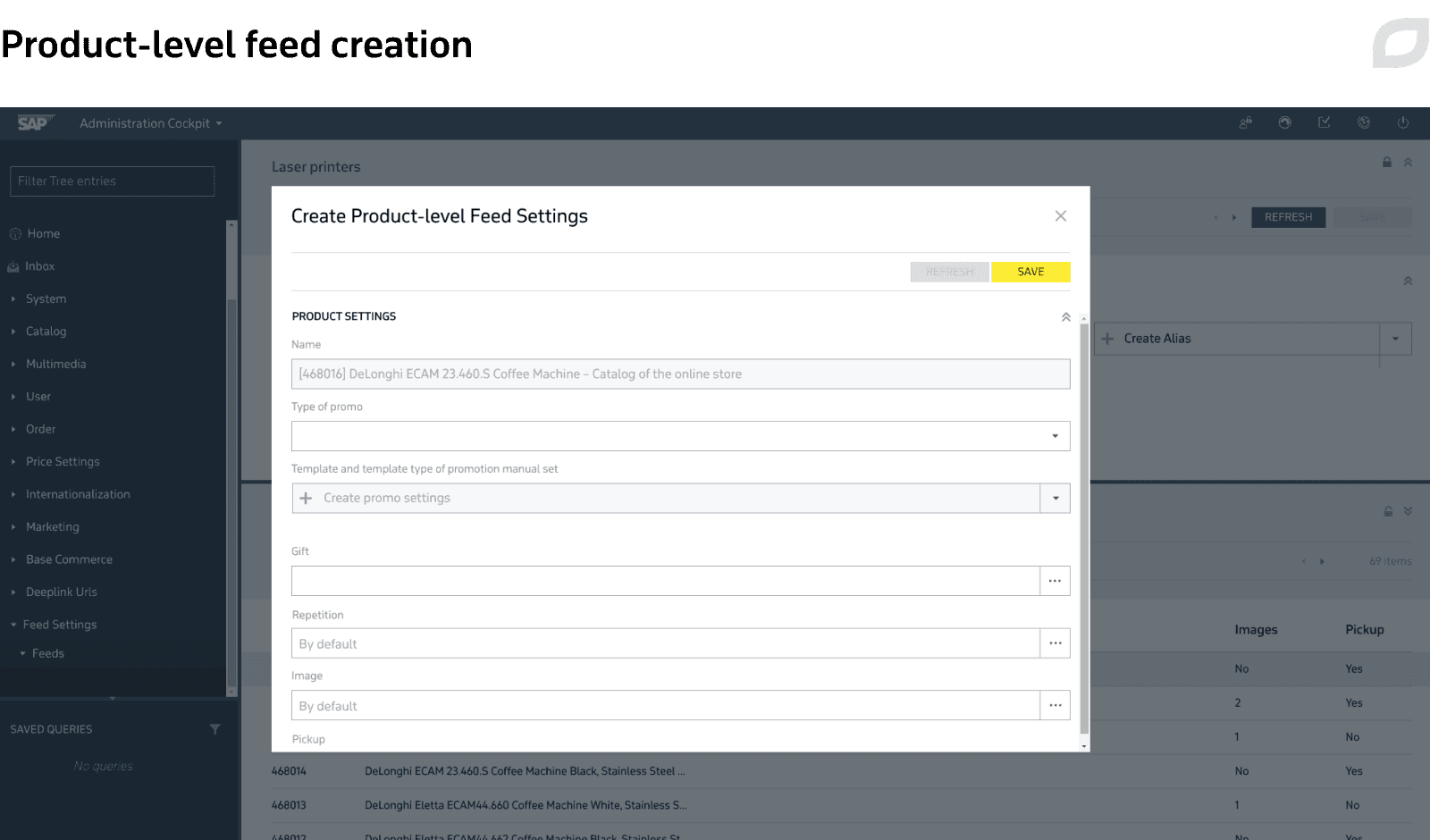
The system pulls the relevant data from the preliminary price calculation module and imports prices that are valid for a certain period, region, customer, or group of products in the feed files. This proved to be beneficial, as many clients base their choices on relevant and up-to-the-minute data.
We enabled the customer to configure the feed files that meet technical requirements, like file size or specific fields availability, for all the selected marketplaces to run effective shopping campaigns on each marketplace. For marketplaces that cannot process feeds larger than 100 MB, the system splits a large feed file into several smaller ones.
Reports creation
We added a product report generation system to monitor and eliminate errors when generating feeds. The system generates two types of reports, one for tracking errors related to incorrect data entry and another for errors stemming from marketplace tech requirements. Two reports are created at the end of feed generation.
To analyze marketing campaigns, the report includes the number of products included in or excluded from the feed with the reason specified.
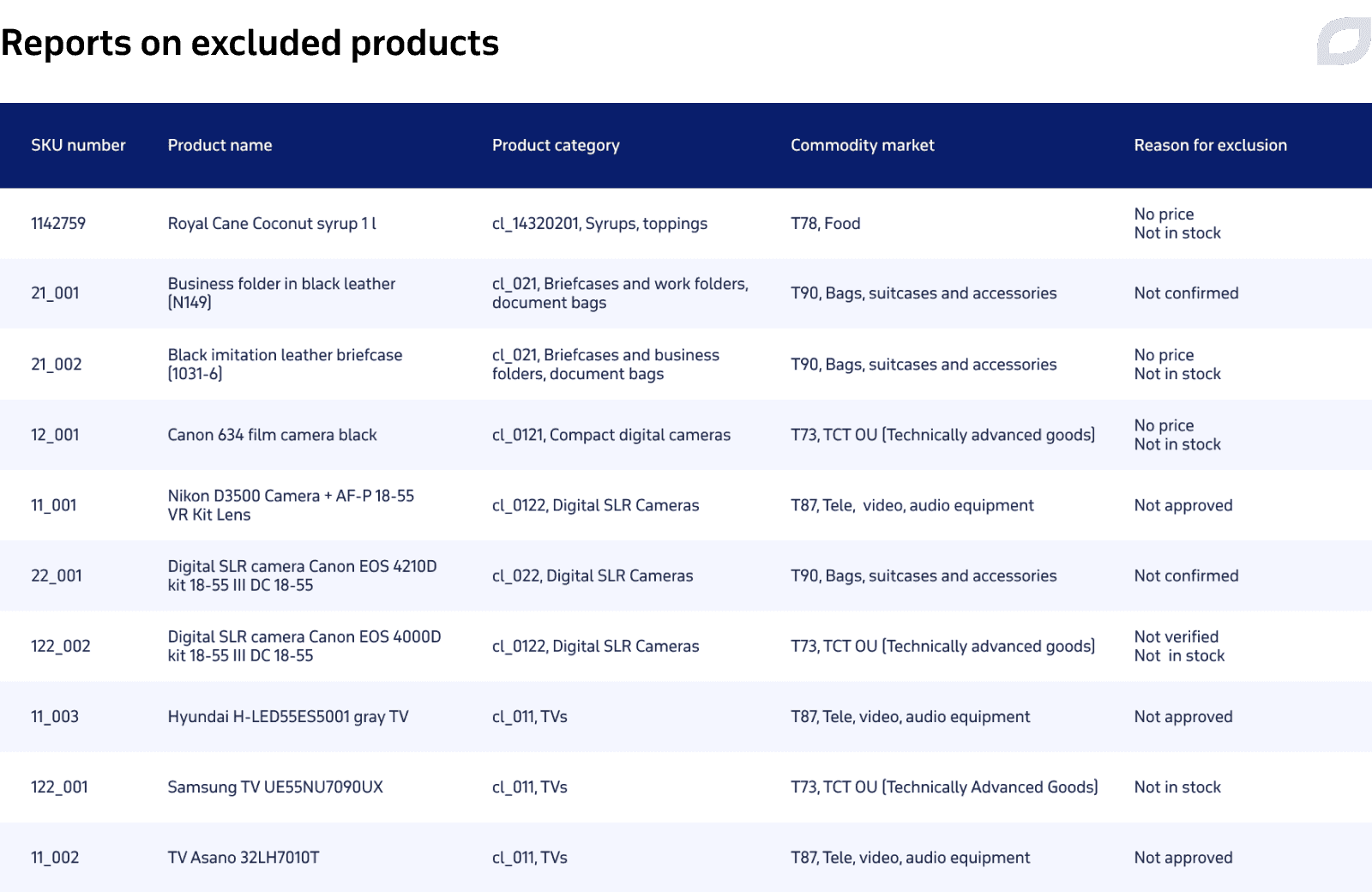
We also created templates for reports containing technical information, such as the size of the feed file in MB, date of feed generation, feed generation time, last time the balance was updated, the time of price, discounts last update status, etc. Here's how a feed technical summary looked like:
|
Number of products included in the feed |
77,275 |
|
File size |
197Mb (100Mb, 97Mb) |
|
Date and time of feed generation |
11/12/2021 20:15 |
|
Feed generation time |
3 minutes |
|
Last time product balance status was updated |
8 minutes |
|
Last time price status was updated |
10 minutes |
|
Last time gifts status was updated |
274 minutes |
Analyzing feed quality changes
We also developed a system for analyzing changes in the quality of feeds by various metrics (like feed generation speed, last time of prices, and balance updates). If the metrics deviate from the setting value, the admin is sent a percentage deviation and a short description of the problem. Thanks to this functionality, the admin is timely informed about the reasons for specific errors and doesn’t need to constantly monitor the feed generation system, because it is automated.
Process
To increase transparency, we divided the project into several phases. We started with the preliminary price calculation system development, creating the solution’s core features and then enhancing the feeds generation module, scaling regions of sales for up to 30, adding new fields, creating a reporting feature, and integrating modules with each other.
Then, we gradually scaled the solution’s functionality and finalized the enhancement of the SAP feed generation module. Now, the system can generate 250+ feeds for all customer’s products and 50+ regions of sales in Google Merchant Center, Facebook, Instagram, Criteo, RTB House, and other marketplaces in line with their technical requirements in less than five minutes.
Results
Itransition created the feed generation system for the customer, which can serve an additional sales and marketing channel. The solution allows the customer to boost sales for a certain category of products, in a certain region, or during a period of time by launching marketing campaigns on marketplaces.
Due to the implementation of the feeds generating engine, the customer increased feed generation speed by 2 times and increased marketplace sales by 25%.

Services
SAP Commerce
Itransition provides end-to-end SAP Commerce consulting, implementation, customization and maintenance. Book your consultation.

Case study
A dedicated SAP training center
Learn how Itransition helped a team of developers become experts in SAP Commerce with a custom-made training program.

Case study
SAP Commerce store audit and optimization roadmap
Learn how Itransition performed a comprehensive backend audit of an SAP Commerce-based store and created an optimization roadmap for detected issues.

Case study
SAP Commerce Cloud integration for Mydeposits
Learn more about Itransition’s SAP Commerce Cloud integration services for a government-approved tenant deposit protection provider in the UK.

Case study
An SAP Commerce-integrated mobile app for a retail chain
Get more details on how Itransition developed a mobile app for an online retail chain based on SAP Commerce.